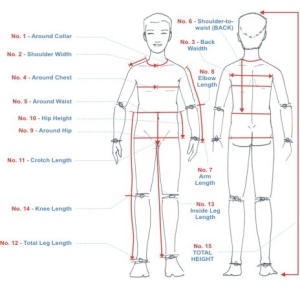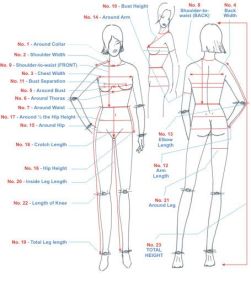I know many of our faire patrons love to come attired in garb for their days at the faire. Whether dressed as a noble, a pirate, a fairy, or a gypsy (or a kilted storm trooper), being in costume is a huge part of the fun for many of you! We have lots of great costume shoppes where you can purchase armor, bodices, hats, or boots. But if you’re a creator, you might enjoy building your own costume. Whether you sew it or buy it, you’ll want to look great and be comfortable. I surveyed our TRF Performance Company on tricks of the trade. These actors wear their costumes twelve hours a day, seventeen days a season, in weather from hot to cold, sunny to stormy. They’ve stayed in garb through it all. Here is some advice they have for you:
1. Create a costume in flexible layers. For example, make your sleeves detachable. In the example above, TRF’s Lord of the Dance is wearing a doublet with detachable sleeves- see the laces dangling at his shoulder? Yes, it’s more work to set in grommets for lacing sleeve to bodice or doublet, but it gives you the option of wearing less on a hot day. Layers also make a costume look complete.
2. Get good, accurate measurements! It’s preferable to have someone do the measurements for you so that you can stand up straight! You may want to use a worksheet like the one at the bottom of this post. Be sure to put your name and the date on it.
3. Sketch your dream costume, then assess your budget and schedule! Things are always going to take longer and cost more than you expect, so allow plenty of time. It’s no fun to come to faire exhausted after pulling an all night sewing session, or too broke to buy beer because your costume went over budget!
4. Make an inexpensive mock up first. When you’re dealing with expensive fabrics like silk or leather, it can be devastating to cut out the pattern pieces only to discover the sizing is wrong or you need practice on a technique such as ruching. Doing a first run on muslin to work out the kinks can save your sanity and your pocketbook!
5. From the fairy godmother, speaking about reinforcement: “Cable ties can be used as boning. If you are well-endowed, consider steel bones. Bone the edges of garments that will be laced up. Best practice is to put a bone at the finished edge, mark lacing holes, the another bone at the other side. This prevents the edges from buckling.
Reinforce any area where you will be making lacing holes or placing grommets. Good things to use are PRESHRUNK cotton canvas or belt backing. A little interfacing added to the fabric edges in addition to other reinforcing is helpful.”
6. If you make a mistake, stop and fix it. You ignore it at your own peril, it will usually come back to haunt you later in the construction process.
7. A tip from the Queen: “I’ve found that using hooks at the top of the bodice and at the waist help when someone is trying to lace you up. They just hold things together enough for the lacing to not be a struggle.”
8. A cotton hoop skirt is the way to go. It holds up better and it’s easier to keep clean. The best one I ever owned was cotton with ruffles sewn along the boning pockets, so the boning was disguised under the dress. I found it at a vintage shop in Galveston, but here’s a link to a similar one: http://www.ebay.com/itm/like/160528353518?lpid=82&chn=ps
9. Reinforce seams, but carry safety pins in case of an emergency!
10. Wear wick away under armor. And anti-perspirant between your thighs (ever had rennie chafe?)
From our own Winnifred Sanderson: “Last but not least: Have fun! Making costumes is a lot of work, but there are ways to make it enjoyable, one of the easiest is to team up with a friend.” Keep watching for costuming posts. Soon, I will give tips for shining at the daily costume contest!
I found this lovely blog from a historical costume seamstress:









Great Ideas all of them! I make costumes for faire and cosplay all year long. The layers are a must because one does not know what the weather will be like at Faire. Especially if you camp. Dont forget to bring a cloak or some woolies for under things. It does freeze that early. Or it can be hot and humid. Say less is more when its Hot. Barbarian wear?
Love the Blog!
LikeLike
Thanks for those additional tips, Jill!
LikeLiked by 1 person
How do i grt my husband a costumr from u
LikeLike
Jessalyn, we have many great shoppes that sell costumes. What sort is your husband looking for?
LikeLike
As a retired Renfaire participant of 20 years experience, these are all very good tips. Here is a way to test your fabric for Renfaire strength and suitability. Many kind of fabric say to dry clean only, but actually will wash very well. Most stores will give you a sample to take with you. Make sure you note where the sample came from so you can go back and purchase the amount your costume will need if it passes the test below:
1. Before you buy your costume fabric ask the sales person to cut a piece about 6″x6″. Some stores do not want to give you a piece that size, if so just purchase as small a piece as they are willing to sell. When you get home measure off that 6″x6′ square and Fraycheck (or pink) the edges to prevent raveling. (Fancy fabrics can reduce themselves to NOTHING).
2. Trace your square onto a piece of paper and set the paper aside.
3. Pin your fabric scrap to an old, white Tshirt you don’t care about (or any larger, white piece of fabric) and toss it into the washer. NOTE: If you’re using multiple kind of fabric you can pin all of them to the Tshirt. Run it (them) through a regular wash and dry.
4. Unpin the scrap(s) and check the Tshirt to see if the colors ran. If your scrap has wrinkled up press it flat then lay it over your tracing to check for shrinkage. A loss of 5% is acceptable. You will also know to buy a little extra when you purchase the full amount you will need.
LikeLike
What a fantastic useful tip! It is devastating to spend hours working on a costume then have it unravel or shrink!
LikeLike
Shop thrift stores for garments you can transform, brocade vests, formal gowns make lovely costume starts, cut to the style you want and add your embellishments
LikeLike